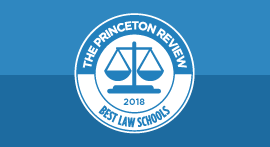
If you’re a future graduate student prepping for the GRE with The Princeton Review, we’ve got you covered.
This page will walk you through the many ways that TPR students can bridge the gap created by disruptions to scheduled test dates. For starters, you’ll continue to have access to key resources until your new test date. We’re here to help you ensure that you still receive your best possible score. (If you’re not enrolled in a program with us, you may find some helpful advice and resources on this page. Please call 1-800-2-REVIEW or email prep@review.com if we can be of assistance.)
If your test-taking plans were disrupted, the silver lining is that you’ve got time—not just to stay sharp, but to get sharper. Here are three things you can start doing now:
1. Make a study plan.
Draw up a study plan to help manage your time. Your plan doesn’t need to be elaborate. It can be as simple as designating one day of the week for each question type or topic. For example, Monday could be devoted to Sentence Equivalence, Tuesday could be your day for Quant Comp, and Wednesday could be for Chart questions. Determine the number of questions you want to do each day and you’ve got a study plan!
2. Keep practicing.
The most important thing you can do between now and your test is to stay in practice. Even doing three or four GRE questions per day will help you maintain your edge. For starters, take additional practice tests. There’s a strong correlation between the number of practice tests taken and the score increase achieved. During your course, you were assigned Tests 1 through 5. If you haven’t taken all the assigned tests, set aside some time to do that. In addition, you have access to three more tests (Tests 6, 7, and 8) in your student portal. Add some or all these tests to your study plan.
Finish any online drills that you haven’t completed. If you didn’t finish all the drills in your course manual, complete those! Explanations to drill questions, including for the full section drills, can be found in the Drills Explanations document on the “Resources” tab of your student portal.
Set aside some time each day to review your practice tests thoroughly. Use your practice test results to identify the areas in each section that are keeping you from getting a better score. Then, use questions and video lessons from the online drills (found in the “Coursework” tab) to address those areas. Don’t try to fix all your weaknesses at once. Fix two things, take a test, then find two new things, and then fix those!
3. Use all the resources available to you.
Our GRE program includes eight practice tests, dozens of online lessons, and thousands of practice questions. If you finish all of those and find yourself short on practice material, there are some excellent additional resources. You can check out GRE Test 1 and 2, available for free through PowerPrep at gre.org. Once you’ve completed those, you can consider taking GRE Tests 3 through 5, available for a fee at gre.org.
For practice, practice, and more practice, check out 1,027 GRE Practice Questions by The Princeton Review. As the title suggests, this book includes 1,027 questions, most of which are not used in our online materials, plus explanations for every answer. You can find it wherever books are sold.
Best of luck, future grad students! We are cheering you on.
Visit ETS’s Coronavirus GRE Testing Updates page for further info about GRE administrations.
Read More
Explore Graduate Programs for You
Explore our featured graduate schools & programs to find those that both match your interests and are looking for students like you.
Best Law Schools
Check out our complete list of 169 law schools, based on surveys of school administrators and over 19,900 students.
Search for Medical Schools
Our medical school search allows you to refine your search with filters for location, tuition, concentrations and more.

Find MBA Programs Matched to Your Interests
Explore our featured business schools to find those that are looking for students like you.


